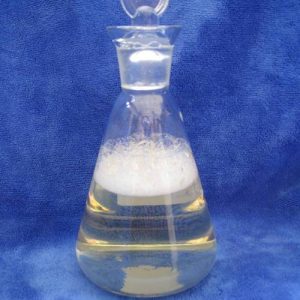
Lauramidopropyl Betaine LAB
Specifications
| Item | LAB-35 | LAB-40 |
| Appearance | Colorless to yellowish transparent liquid | Colorless to yellowish transparent liquid |
| Color(Hazen) ≤ | 80 | 80 |
| pH value(5% aqueous solution) | 4.0-7.0 | 6.0-8.0 |
| Solid content % | 35.0±2.0 | 40.0±2.0 |
| Active matter % | 30.0±2.0 | 34.0±1.0 |
| Free amine %≤ | 0.5 | 0.5 |
| Nacl %≤ | 6 | 7 |
| Glycolic acid %≤ | 0.5 | 0.5 |
| Monochloroacetic acid ppm≤ | 20 | 20 |
Packing & Storage
| Packing | in 210KG-225KG drum, 1050KG IBC |
| Storage | 20℃, 2 years. |
| Shipping | Room temperature in China; may vary elsewhere |
Free Quote
At present, the company has more than 10 experienced export sales .
For samples, pricing, or more information, please call us at 0086-25-52397805 or mail to info@ascent-chem.com or we will respond to you as soon as possible.
Tel: 0086-25-52397805
E-mail: info@ascent-chem.com

General Information
| Common Names | Lauramidopropyl Betaine | LAB | ||||||
| Structure |  | ||||||
| CAS No. | 4292-10-8 | Boiling Point (℃) | 100ºC | ||||
| Molecular Weight | 360.53 | Melting Point (℃) | -3ºC | ||||
| Appearance | Colorless to yellowish transparent liquid | Vapor Specific Gravity | N/A | ||||
| HS Code | 34021100 | Flash Point | 94ºC | ||||
| Solubility | Excellent solubility and compatibility ability | Autoignition Temperature (℃) | N/A | ||||
| Safety Phrases | |||
| RIDADR | |||
| WGK Germany | |||
| Packaging Group | |||
| Hazard Class | |||
| SYMPTOMS | PREVENTION | FIRST AID | |
| Inhalation | Cough. Sore throat. | Use local exhaust or breathing protection. | Fresh air, rest. |
| Skin | Redness. Burning sensation. Itching. | Protective gloves. | Remove contaminated clothes. Rinse and then wash skin with water and soap. |
| Eyes | Redness. Pain. | Wear safety goggles. | First rinse with plenty of water for several minutes (remove contact lenses if easily possible), then refer for medical attention. |
| Ingestion | Abdominal pain. Nausea. Vomiting. | Do not eat, drink, or smoke during work. Wash hands before eating. | Rinse mouth. Induce vomiting (ONLY IN CONSCIOUS PERSONS!). Refer for medical attention . |
Synthesis method Using lauric acid and N, n-dimethylmalonediamine as raw materials at 160℃ ~ reflux temperature to prepare N, n-dimethyl-n ‘-lauryl propylamine, and then with sodium chloroacetic acid in organic solvent (such as ethanol) at 70℃ ~ reflux temperature reaction, vacuum distillation of ethanol to obtain the product
Frequently Asked Questions
LAB: Gentle Surfactant for Products
Lauramidopropyl betaine (LAB) is a synthetic surfactant that is commonly used in personal care and cleaning products. It is a zwitterionic surfactant, meaning it carries both a positive and a negative charge, which gives it unique properties and makes it compatible with a wide range of formulations.
LAB is derived from lauric acid, which is obtained from coconut oil or palm kernel oil. It is often used as a secondary surfactant or co-surfactant in various cleansing and foaming products, including shampoos, body washes, liquid soaps, and facial cleansers. It helps to create a rich lather, stabilize the foam, and improve the overall cleansing efficiency of these products.
One of the key advantages of LAB is its mildness. It is considered to be a gentle surfactant and is well-tolerated by most individuals, including those with sensitive skin. LAB is known for its low irritancy potential and is often used in products that are marketed as being “gentle” or “mild.”
LAB also exhibits good compatibility with other ingredients commonly found in personal care formulations. It is compatible with anionic, cationic, and nonionic surfactants, as well as with various conditioning agents and preservatives. This compatibility makes it a versatile ingredient that can be easily incorporated into different types of formulations.
Additionally, LAB has excellent biodegradability, which is an important consideration for environmentally friendly formulations. It breaks down readily in wastewater treatment systems, reducing its impact on the environment.
Overall, lauramidopropyl betaine (LAB) is a commonly used surfactant in personal care and cleaning products due to its mildness, compatibility, and biodegradability. Its versatile nature makes it suitable for a wide range of formulations, and it contributes to the cleansing and foaming properties of the products in which it is used.


